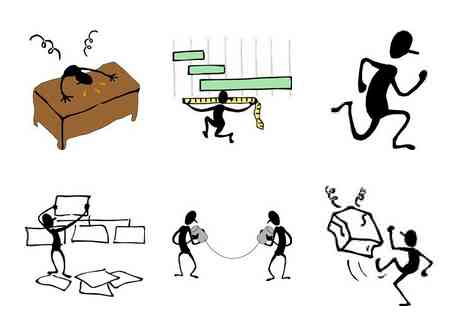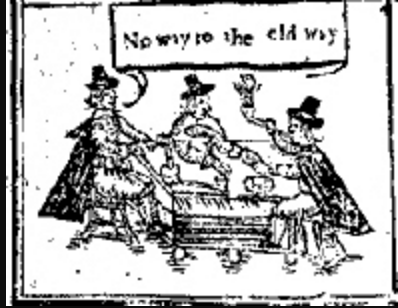



Archiveology Pins
Please allow 10 working days to process before shipping
1.5" Hard Enamel Pins - Double Clasp
Two Pack - Red/Yellow + Brown/Green
Archiveology involves the use of the image archive as a language. It is the reuse, recycling, appropriation, and borrowing of archival material. Archiveology traverses the experimental, documentary, and essayistic, moving beyond the categories of found footage, compilation and collage. It proliferates on the internet, just as it proliferates in the art gallery.

Archiveology cuts through the auratic qualities of images, and safeguards them as souvenirs not only of their referents, but of the constellations of social relations from which they were produced. As “documents,” the images collected in archiveological films acquire meaning through their ability to awaken, stimulate, or attune the viewer’s belief in their indexicality. They are not to be taken for granted, but to be recognized as passages into the past.
http://iamhist.net/2017/05/archiveology/
Walter Benjamin
Walter Benjamin’s work seems to anticipate archiveology. His own method of aphoristic writing, collecting quotations from other writers, seems like a literary companion to the practice. If media archaeology is thought and analysis that emerges from the ruins, taking left-overs, waste, rubble and ruins of media cultures as its fuel, there are ecological implications in how Benjamin ties together the ruins of material culture as part of the ecologies of thought. The work of Arcades-project is emblematic in this regard with its multilayered approach that methodologically picks up on the theme of the fragment when writing about the ruins (in which we live) of modernity, mass culture, emergence of media cultures, and capitalism.

The long duration, the intermediary, and the time of the event intermingle and mix, and our seemingly contemporary is one of old, the past as well in a way that does not fit in with either linear nor cyclical notions of time. Same applies to thought which resides in ruins as well and where the idea of "archaeology" might be more apt than "history" as a notion to carve out the layered constellation in the cognitive and the affective take place. Thoughts, things, surroundings emerge from ruins, but so they return as ruins. Dead media is an index of ruins of media cultures, but also a reminder of the continuing environmental significance of discarded waste.
https://mediacartographies.blogspot.com/2010/11/on-ruins-benjamin.html
Rhizome
From botany we learn that a rhizome is a horizontal creeping stem lying on or under the ground from which shoots arise or spread and roots descend.The rhizome is a dynamic, decentered, system or network. It is a structure without any controlling center of hierarchy, a kind of self-reproducing multiplicity that cannot be understood as a single organization or localized in a particular territory. It's also generative in that the offshoots or runners become freestanding plants. Strawberries, crabgrass, bamboo, ginger, and iris plants are common examples of rhizomes in nature.

Deleuze and Guattari used the metaphor of the rhizome to distinguish between totalizing unities and non-totalizing multiplicities. They discuss traditional arborescent thought, or what we refer to as the tree of knowledge metaphor, as universalizing and essentializing knowledge of "systematic and hierarchical principles (branches) that are grounded in firm foundations (roots)." Rhizomes, on the other hand, are "non hierarchical systems of deterritorialized lines that connect with other lines in random, unregulated relationships.”

Rhizomatic thought deconstructs the binary logic of arborescent thought, seeking to pluralize and disseminate its "roots and branches" so to produce "differences and multiplicities by making new connections.” Importantly, the method of rhizomatic analysis is productive or generative of new forms through lines of thought or intersections of ideas. As Deleuze and Guattari stated, "In truth it is not enough to say, 'Long live the multiple,' difficult as it is to raise the cry. No typographical, lexical, or even syntactical cleverness is enough to make it heard. The multiple must be made.”

The multiple is made, then, through rhizomatic analysis. The subject of rhizomatic analysis is conceptualized in terms of three basic kinds of lines, which explain the de-centered nature of the system. These lines refer to a phenomenon's constituting or deconstituting components, including rigid lines, supple lines, and lines of escape. The first, rigid segmentary lines, construct fixed and normalized identities by way of binary oppositions. Molar aggregates of a rhizomatic or decentered system are components that are characterized by hierarchy, stratification, and structuration. The second kind of lines are molecular movements away from molar rigidity, which disturb the linearity and normalcy of molar aggregates. They represent "cracks" in their totalizing facades. Finally, there are lines of flight, runners which form the plane of creativity. These lines are the full-fledged deterritorializing movements away from molar identity where cracks become ruptures and the subject is shattered in a process of becoming multiple. Deleuze and Guattari characterized these lines of flight as "fundamentally positive and creative," rather than as lines of "resistance or counterattack.”

Lines of flight (runners) form the most interesting part of a rhizomatic map because they indicate arenas of dynamic creative activity. This generation of multiplicity differs from other forms of analysis that tend to manufacture hierarchies. Deleuze and Guattari theorize that the positive and creative development of a rhizomatic field will follow lines of flight. They base the notion that multiple paths of escape and transformation are possible because there is no system "that does not leak in all directions.” Accordingly, centers of power "are defined much more by what escapes them or by their zone of impotence than by their zone of power.”

As a theoretical model that maps creative flows and combats totalizing modes of thought, the rhizome seems particularly appropriate to productive theorizing about visual sense-making. The field of visual communication can be rhizomatically mapped in terms of its referent points and intersections. It has clusters of referent points, both molar (oblong) and molecular (oval) components, as well as the points of intersection (diamond) where the central components of visual communication seem to be emerging.

The lines of flight represent the areas of study between disciplines and fields. The broadening plane of creativity contributes to the development of visual communication as a field. In some cases, the runners represent intersections; in other cases, they represent points of departure. They are characterized by birth and rebirth as well as death and destruction. They are the components that "deconstitute" or "leak" from the totalizing efforts of the more traditional disciplines and fields. This map demonstrates, in other words, the interconnectedness of the ideas that are evolving and becoming the field of visual communication. It does not operate in a traditional linear or language-centered reality. Rather it displays in the most exciting terms, a way of theorizing visual communication outside and beyond disciplinary boxes, an approach that is both organic and dynamic.

It is not, however, conclusive. Adjacent areas can be found in such fields as architecture, landscape architecture, archaeology, choreography, and costume design, among others. Because this is a dynamic system, some areas will become more central and dominant and others may shrink and even die.

Issues to consider include how we apprehend the experience of visual communication with language that collapses and flattens the phenomenon in much the same manner as a cartographic projection. In familiar terms, the language map is simply not the pictorial territory. Language can be pushed, however. Narrative, analogy, metaphor, and poetic rhythms of harmony, counterpoint, variation, and accent all provide forms of language use that more closely resembles the nonlinear experience it attempts to describe. A new vocabulary of imaging and seeing can be developed and used to describe the communicating partners in a visual experience. Writing in a style of “thick description" can be encouraged in our portrayal of the visual encounters we observe.
Diggers
The Diggers were a millenarian Protestant group that, during the English Revolution, advocated communist land ownership and the abolition of masters. On April 1st, 1649, a group of about forty Diggers established a participatory community on St. George's Hill in Surrey, which they renamed George's Hill. The group dug the barren land and planted beans, wheat, rye, parsnips, and carrots. Their "Diggers' Song" of April 1st envisioned a radical levelling of wealth and power:

Your houses they pull down to fright poor men in town,
But the gentry must come down, and the poor shall wear the crown.
Stand up now, Diggers all.
With spades and hoes and plows, stand up now, stand up now.

Local authorities responded by trampling the Diggers' seedlings, destroying their huts, and stealing their tools. Nonetheless, the Diggers maintained their community on the hill for about a year. Gerrad Winstanley wrote the Diggers' manifesto The True Leveller's Standard Advanced, which declared "the Earth to be a Common Treasury" of humanity and rejected the notion "that one branch of mankind should rule over another."
Usufruct
In property law ‘usufruct’ is a limited real right found that unites the two property interests of usus and fructus: Usus (use) is the right to use or enjoy a thing possessed, directly and without altering it. And Fructus (fruit, in a figurative sense) is the right to derive profit from a thing possessed. A usufruct is either granted in severalty or held in common ownership, as long as the property is not damaged or destroyed.

In many usufructuary property systems, such as the traditional ejido system in Mexico, individuals or groups may only acquire the usufruct of the property, not legal ownership. Ancient examples of usufruct are found in the Code of Hammurabi and the Law of Moses. The Law of Moses directed property owners not to harvest the edges of their fields, and reserved the gleanings for the poor.

In some indigenous cultures, usufruct means the land is owned in common by the people, but families and individuals have the right to use certain plots of land. Land is considered village or communal land rather than owned by individual people. While people can take fruits of the land, they may not sell or abuse it in ways that stop future use of the land by the community.
